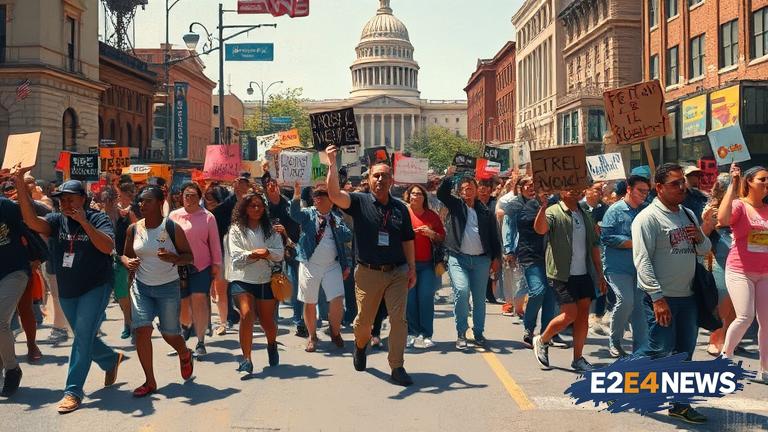The United States has witnessed a surge in protests, with thousands of individuals from diverse backgrounds coming together to voice their concerns and demand change. These demonstrations, inspired by the legacy of Congressman John Lewis, aim to address various social and political issues, including racial inequality, police brutality, and voting rights. The protests, which have been largely peaceful, have drawn attention to the systemic problems that have plagued the country for decades. Participants, ranging from young adults to seniors, have been motivated by a desire to create a more just and equitable society. The movement has gained momentum, with protests taking place in cities and towns across the country. Organizers have emphasized the importance of nonviolent resistance, encouraging protesters to engage in respectful and constructive dialogue with law enforcement and local officials. Despite the challenges and obstacles, the protesters remain committed to their cause, driven by a sense of moral obligation to challenge unjust systems and institutions. The ‘good trouble’ protests have sparked a national conversation, with many Americans reflecting on the country’s history and the ongoing struggle for civil rights. The demonstrations have also highlighted the need for greater civic engagement and participation in the democratic process. As the protests continue, they are likely to have a significant impact on the country’s political landscape, potentially influencing policy decisions and shaping the national agenda. The movement’s emphasis on grassroots organizing and community empowerment has inspired a new generation of activists, who are determined to create positive change. The protests have also drawn attention to the importance of protecting and expanding voting rights, which are essential for ensuring that all citizens have an equal voice in the democratic process. Furthermore, the demonstrations have underscored the need for greater accountability and transparency in law enforcement, as well as the importance of addressing systemic racism and bias. The ‘good trouble’ protests have been marked by a sense of solidarity and unity, with participants from diverse backgrounds coming together to support a common cause. The movement has also been characterized by a sense of creativity and innovation, with protesters using art, music, and social media to convey their message and mobilize support. As the protests continue to evolve, they are likely to remain a major focus of attention, both nationally and internationally. The ‘good trouble’ movement has the potential to inspire similar movements around the world, as people everywhere seek to challenge unjust systems and create a more equitable and just society. The protests have also highlighted the importance of intersectionality, recognizing that social justice issues are often interconnected and that a comprehensive approach is needed to address them. In conclusion, the ‘good trouble’ protests represent a significant moment in American history, as citizens come together to demand change and create a more just and equitable society. The movement’s emphasis on nonviolent resistance, civic engagement, and community empowerment has inspired a new generation of activists, who are determined to create positive change. As the protests continue, they are likely to have a lasting impact on the country’s political landscape and social fabric.
